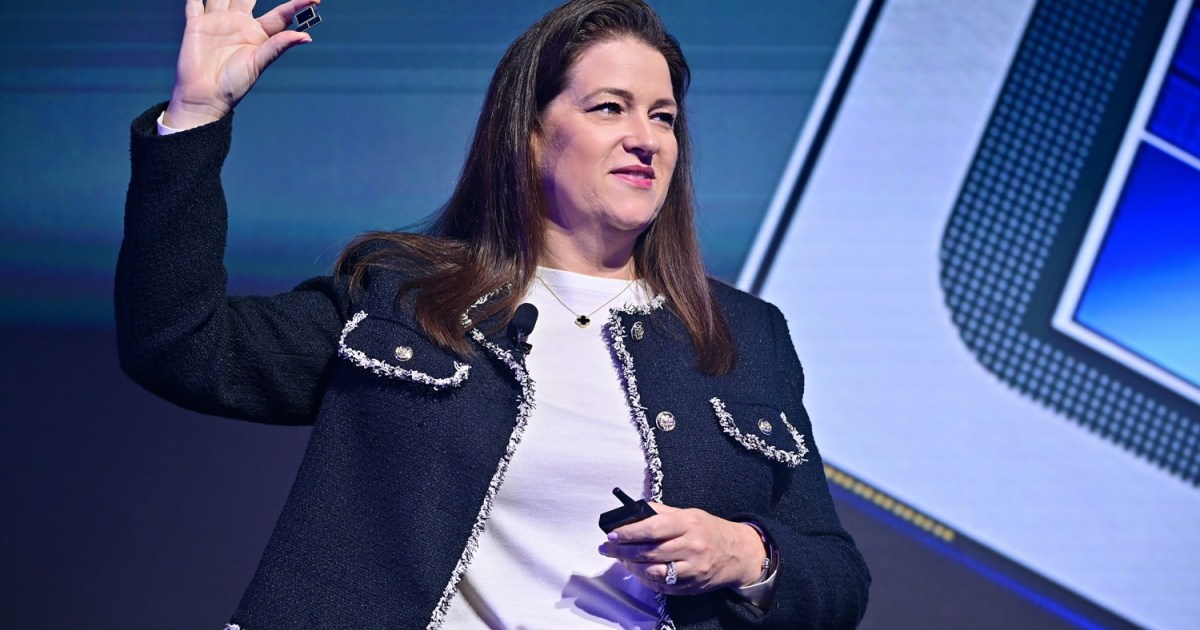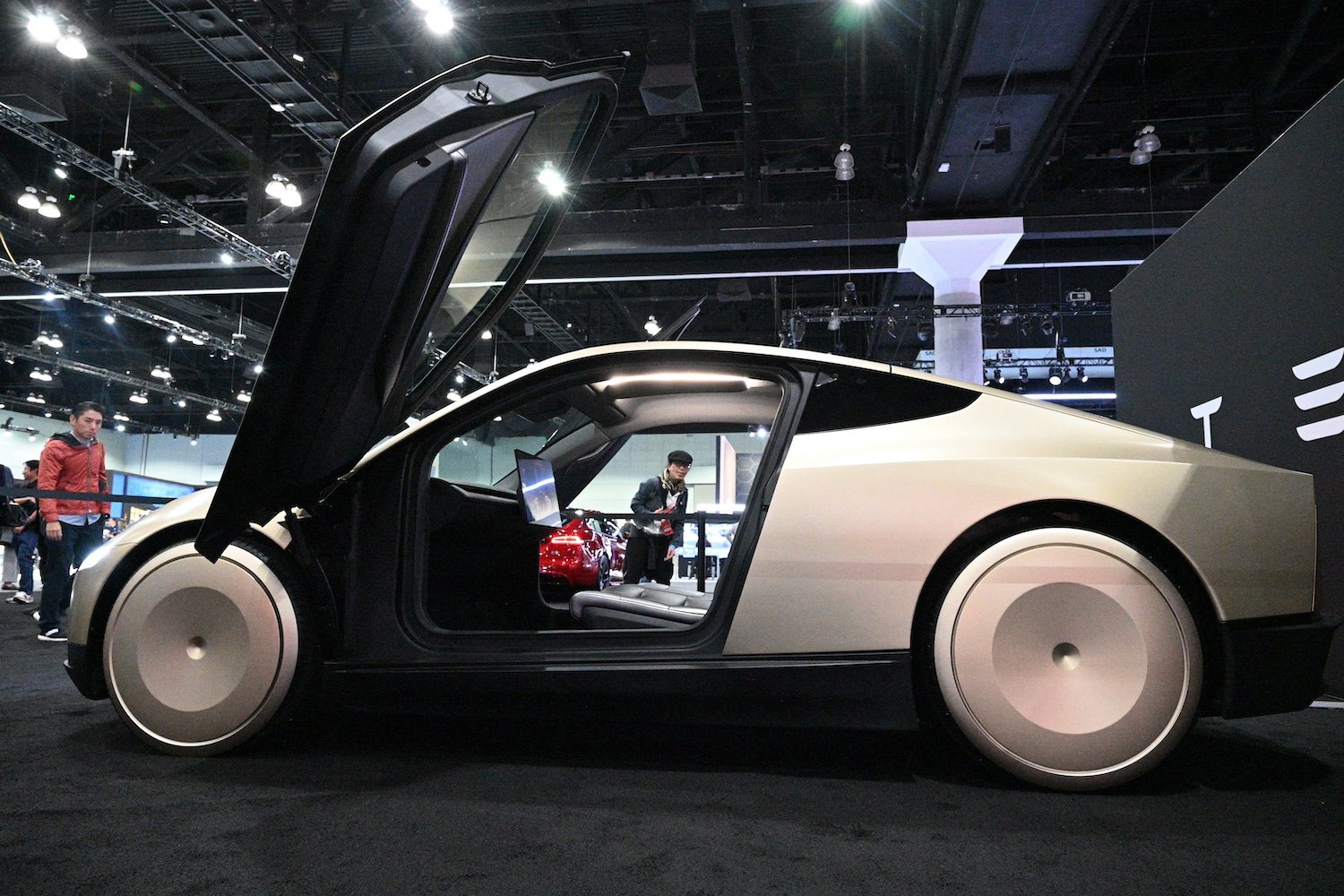Intel’s Lunar Lake isn’t just another CPU generation; it’s a radical departure from the company’s traditional focus on raw power. This upcoming chip architecture prioritizes power efficiency above all else, marking a significant shift in Intel’s design philosophy. Announced at Computex 2024, Lunar Lake represents a fresh start, a recognition that maximizing battery life is just as important as maximizing performance.
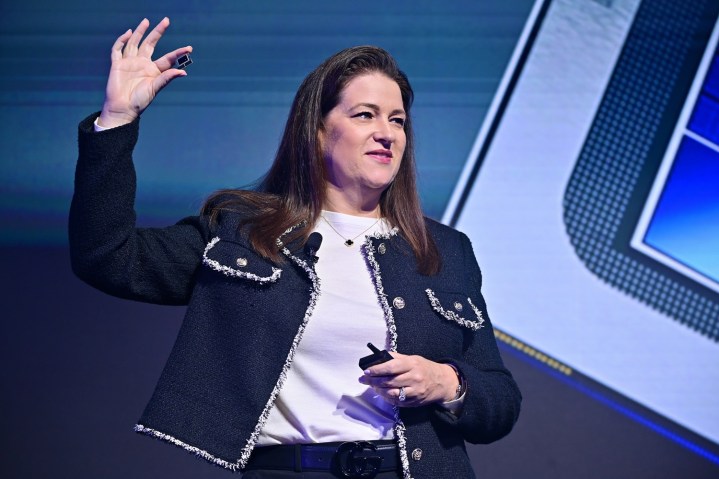 An Intel executive holding a Lunar Lake CPU.An Intel executive showcasing the new Lunar Lake CPU, highlighting its focus on power efficiency.
An Intel executive holding a Lunar Lake CPU.An Intel executive showcasing the new Lunar Lake CPU, highlighting its focus on power efficiency.
Prioritizing Efficiency
This new era for Intel hinges on a reimagined hybrid core architecture. While still utilizing a combination of Performance (P) cores (Lion Cove) and Efficient (E) cores (Skymont), Lunar Lake shifts the workload balance dramatically. Unlike previous generations where E-cores handled only background tasks, Skymont is designed to be the primary workhorse. Most tasks, according to Intel, will run on these highly efficient E-cores, with the P-cores kicking in only when demanding applications require a boost.
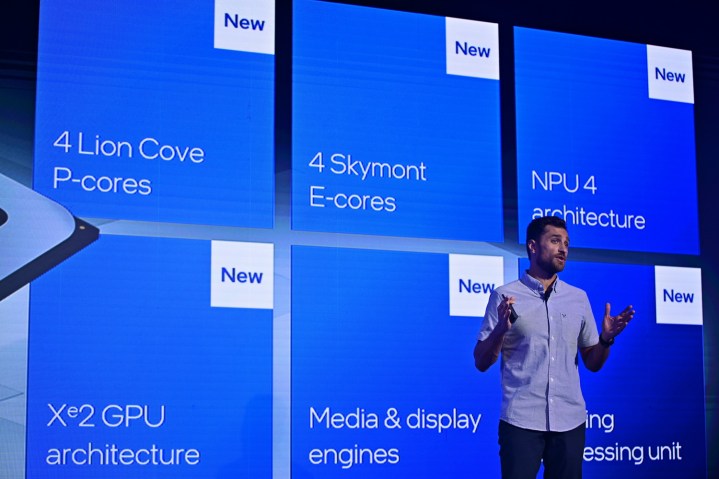 Intel presenting its new cores for Lunar Lake.Intel’s presentation of the new core structure for Lunar Lake, emphasizing the increased role of the E-cores.
Intel presenting its new cores for Lunar Lake.Intel’s presentation of the new core structure for Lunar Lake, emphasizing the increased role of the E-cores.
This new approach allows Lunar Lake to dynamically adjust its power consumption, offering a wider performance range than previous generations. Even tasks like Microsoft Teams, which previously engaged the P-cores, can now be efficiently handled by Skymont.
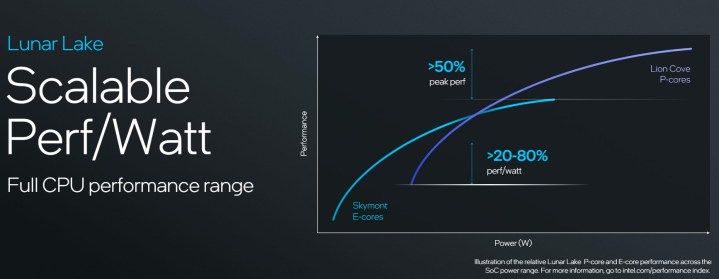 Performance ranges for Intel Lunar Lake CPUs.A chart illustrating the overlapping performance targets of the P-cores and E-cores in Lunar Lake, showcasing the E-cores’ expanded capabilities.
Performance ranges for Intel Lunar Lake CPUs.A chart illustrating the overlapping performance targets of the P-cores and E-cores in Lunar Lake, showcasing the E-cores’ expanded capabilities.
Skymont: A Leap in Efficiency
Intel claims significant performance gains with Skymont. They assert it can match the performance of Meteor Lake’s E-core at one-third the power and achieve double the single-core performance at peak power.
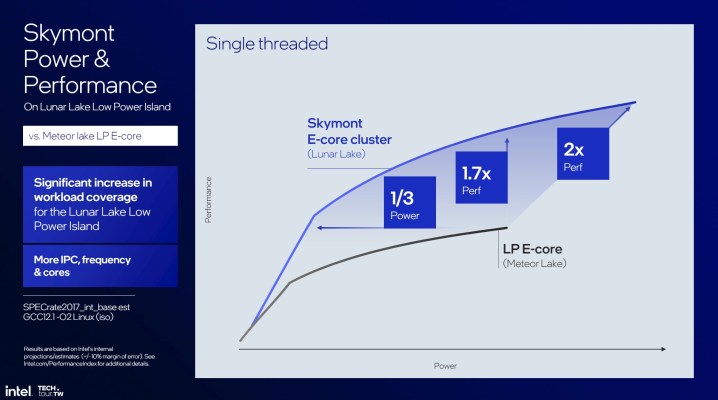 Performance for Skymont cores compared to Meteor Lake.A comparison of Skymont’s performance against Meteor Lake’s E-cores, highlighting the significant improvement in power efficiency.
Performance for Skymont cores compared to Meteor Lake.A comparison of Skymont’s performance against Meteor Lake’s E-cores, highlighting the significant improvement in power efficiency.
Even more impressive is the claimed 2% average IPC (Instructions Per Clock) increase over Raptor Cove, Intel’s previous-generation desktop P-core. This demonstrates a substantial performance leap for a mobile E-core. This efficiency drive extends to other design choices, such as separate voltage rails for P-cores and E-cores, enabling complete shutdown of the P-cores when idle. Additionally, the E-cores now feature 4MB of cache and improved access to on-board memory.
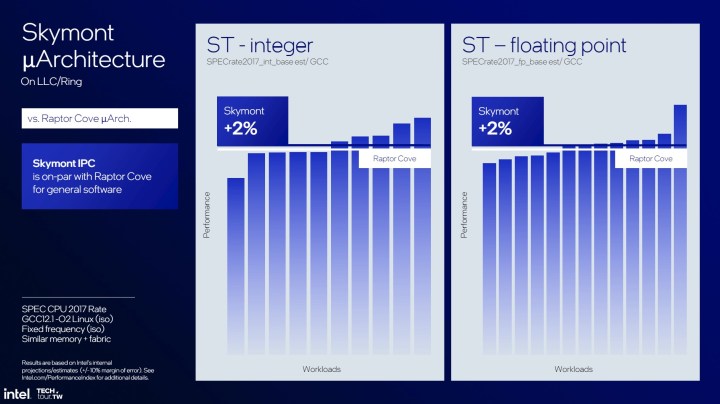 Lunar Lake performance compared to Raptor Cove.Lunar Lake’s performance compared to Raptor Cove, showcasing the significant performance improvements of the new architecture.
Lunar Lake performance compared to Raptor Cove.Lunar Lake’s performance compared to Raptor Cove, showcasing the significant performance improvements of the new architecture.
A Controversial Choice: No Hyper-Threading
While Lion Cove also focuses on efficiency, a notable, and potentially controversial, change is the absence of Hyper-Threading on both P-cores and E-cores. Intel justifies this decision by stating that “Hyper-Threading doesn’t come for free,” suggesting the power savings outweigh the performance benefits.
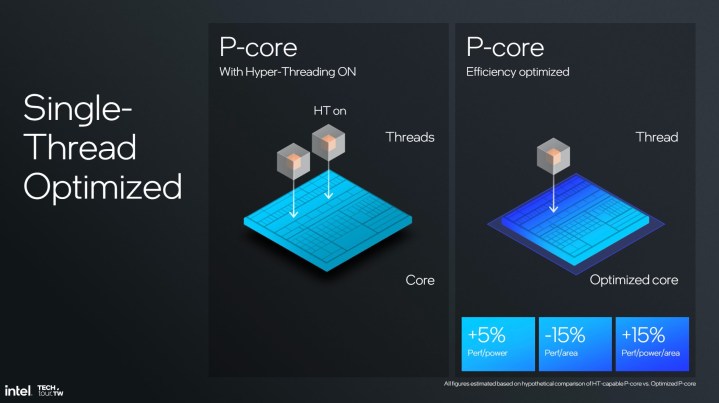 Hyper Threading on Lunar Lake cores.A diagram explaining the absence of Hyper-Threading on Lunar Lake’s cores, emphasizing the focus on power efficiency.
Hyper Threading on Lunar Lake cores.A diagram explaining the absence of Hyper-Threading on Lunar Lake’s cores, emphasizing the focus on power efficiency.
Embracing TSMC
Another significant change is Intel’s decision to outsource the manufacturing of Lunar Lake’s compute tile to TSMC, utilizing their advanced N3B process node. This marks a departure from Intel’s tradition of in-house manufacturing. The platform tile utilizes TSMC’s N6 process.
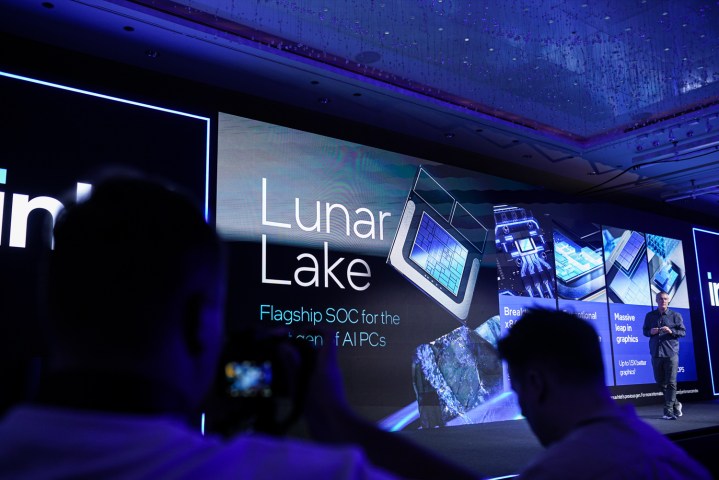 Intel announcing its Lunar Lake CPUs.Intel’s announcement of the Lunar Lake CPUs, highlighting the partnership with TSMC for manufacturing.
Intel announcing its Lunar Lake CPUs.Intel’s announcement of the Lunar Lake CPUs, highlighting the partnership with TSMC for manufacturing.
Lunar Lake Specifications and Features
Lunar Lake’s base configuration comprises an eight-core CPU with four E-cores and four P-cores, scalable to higher core counts in clusters of four. The redesigned NPU boasts up to 48 TOPS, a substantial upgrade over Meteor Lake, fulfilling the requirements for Copilot+ PCs. The overall AI performance is further enhanced by contributions from the CPU (5 TOPS) and the new Xe2 (Battlemage) GPU (67 TOPS), totaling over 120 platform TOPS.
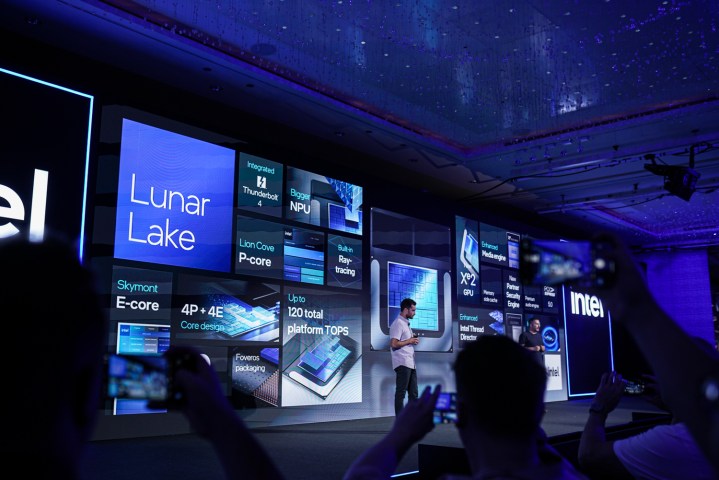 Intel revealing Lunar Lake features at Computex 2024.Intel revealing the key features of Lunar Lake at Computex 2024, including its improved NPU and Xe2 graphics architecture.
Intel revealing Lunar Lake features at Computex 2024.Intel revealing the key features of Lunar Lake at Computex 2024, including its improved NPU and Xe2 graphics architecture.
Xe2 promises a significant graphical leap, with Intel claiming up to a 50% performance boost over the previous generation. This improvement stems from architectural enhancements, including native ExecuteIndirect support for DirectX 12, new compression techniques, and faster cache clearing.
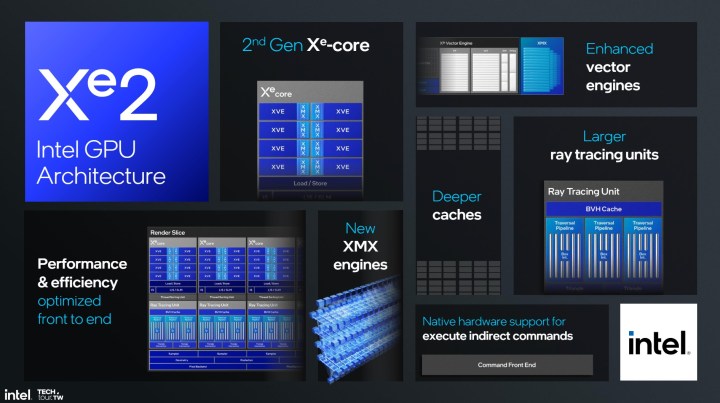 The features for IntelA summary of the key features of Intel’s Lunar Lake platform, including its CPU, GPU, NPU, and support for various technologies.
The features for IntelA summary of the key features of Intel’s Lunar Lake platform, including its CPU, GPU, NPU, and support for various technologies.
Beyond the CPU, GPU, and NPU, Lunar Lake features a display engine supporting DisplayPort 2.1 and HDMI 2.1, a media engine supporting AV1 and VVC codecs, and up to 32GB of LPDDR5X memory.
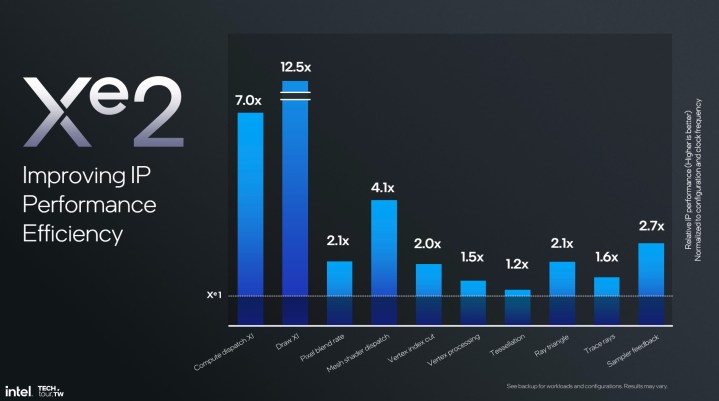 Performance improvements for Intel Xe2 graphics.A graph illustrating the performance improvements of Intel’s Xe2 graphics architecture compared to the previous generation.
Performance improvements for Intel Xe2 graphics.A graph illustrating the performance improvements of Intel’s Xe2 graphics architecture compared to the previous generation.
A New Era for Intel
While many details like clock speeds and power targets remain undisclosed, Lunar Lake’s architectural focus on efficiency and TSMC’s advanced manufacturing process signify a substantial shift for Intel. It’s crucial to remember that while Intel is discussing architecture, competitors are showcasing products. The true test of Lunar Lake will come when it powers real-world devices. However, it’s undeniable that Intel is entering a new era, redefining itself with a commitment to power efficiency and a willingness to adapt its strategies. Lunar Lake is not just a new generation; it’s a reinvention of the Intel we knew.



